Helmets have been used to protect soldiers since the advent of warfare. When one thinks of ancient armor and helmets, the most thought of were those from ancient Greece. There have been many styles produced depending on the time period and location of where it was manufactured.
They were usually custom-made and lined with leather for comfort. A warrior’s helmet was not just a piece of armour but in some Greek cultures signified the arrival of manhood when the young man was finally fitted for his first helmet. When not being worn it frequently occupied a place of honor in the home.
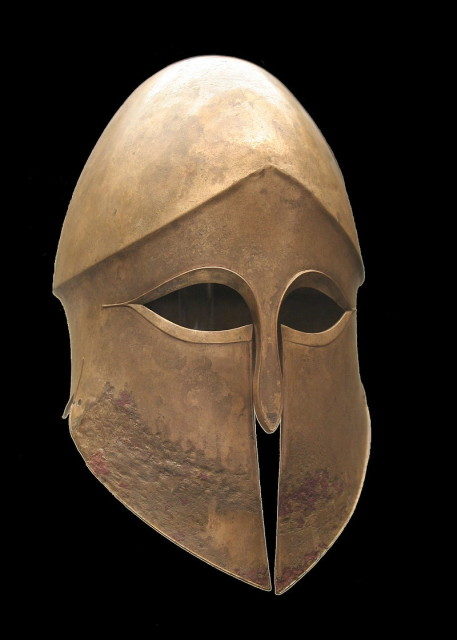
Many different types of helmets existed including the Spartan helmet, Chalcidian helmets, Corinthian helmets, Cretan helmets, and Illyrian helmets and Phrygian helmets. While the Spartan helmets are the most well-known, historians believe Corinthian helmets were the first to be used by the ancient Greeks.
Corinthian helmets took their name from Corinth which was one of the largest and most important cities in ancient Greece. The helmets were usually made of brass or bronze. The most basic helmet featured a band across the forehead coming down around the temple and down to a point just below the jaw called the cheek guard. There was a guard that extended from the middle of the forehead to cover the wearer’s nose, and the back of the helmet came down to collar level to protect the neck of the soldier.
Because the soldier usually wore the helmet tipped back on his head, unless he was actually in battle, the very end of the back was shaped in a flipped upward fashion.
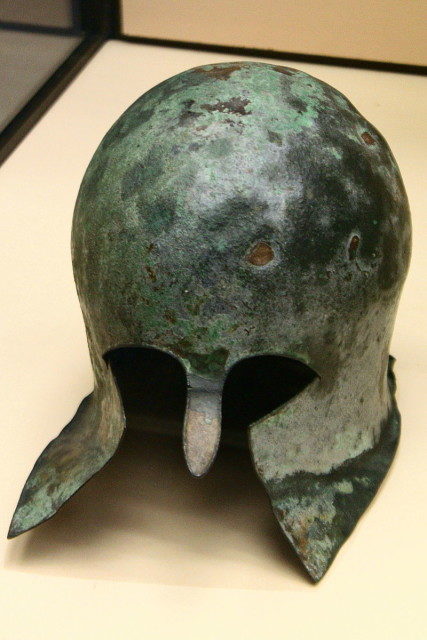
From the 7th to the 4th century B.C. some helmets actually covered the entire face of the wearer with just openings for the eyes. These proved to be very restrictive in battle as the helmet did not move fluidly with the head and severely limited vision. Some were decorated with carvings and even plumes made from dyed horsehair shaped like a brush running vertically from the front of the dome to the back resembling a Mohawk haircut. The plumes made for a more imposing presence by adding height to the wearer.
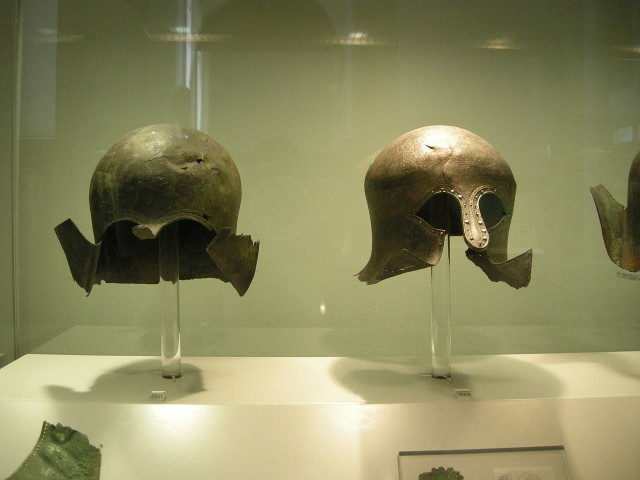
Corinthian and Thracian helmets were made from two pieces of metal welded together while Illyrian style helmets were made from just one piece of metal molded into a dome with an open face but more pronounced cheek guards and neck flap.
The dome was higher than the Corinthian helmets. These were manufactured in the area of Illyria in the western Balkan Peninsula and used through the 5th century B.C.
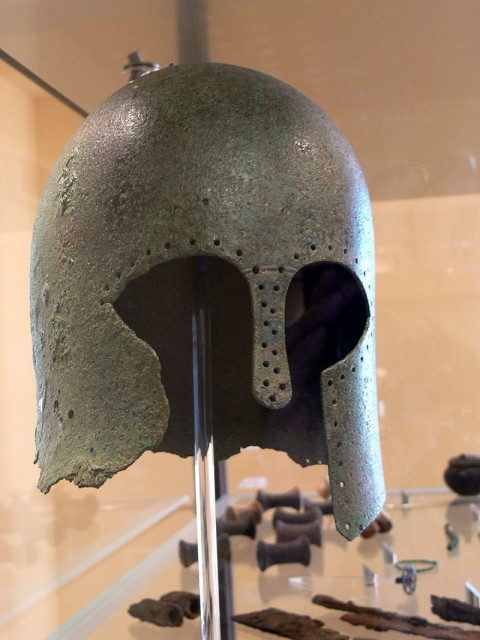
Cretan helmets used in the 7th and 8th century were usually made from bronze and originated on the Island of Crete. They were much more ornate and lacked the nose guard and flipped up neck guards of the Corinthian helmets. They were often paired with a Mitra, a bronze belly guard worn similarly to an apron. The New York Metropolitan Museum acquired several examples of these helmets in 1989, a gift of the Norbert Schimmel Trust.
Chalcidian helmets, used about 500 B.C. came from the area of Chalcidia, an ancient state of Greece just southeast of Macedonia that was conquered in 347 B.C. and absorbed into Athens.
These had a more pointed dome, and the cheek guards were made separately and attached by pins. They were often attached just before the temple, leaving an open space for the ear. The nose guard was merely ornamental and looked like a tiny drop of water.
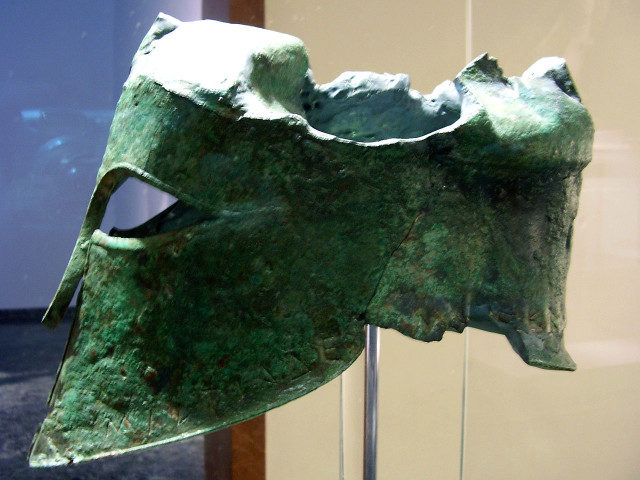
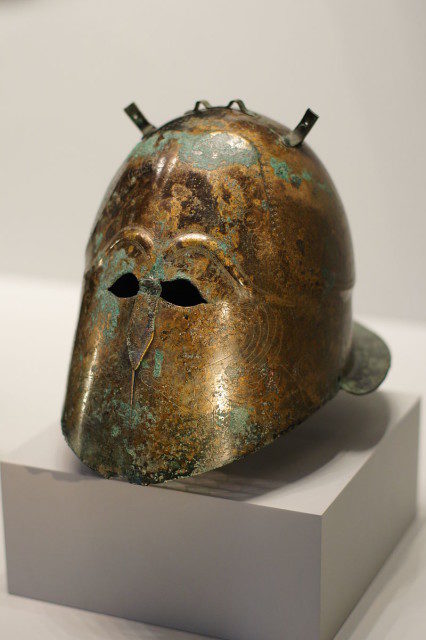
The Phrygian helmet, which is also known as the Thracian helmet was used about 350-300 B.C. in the ancient kingdom of Phrygia in the west central part of Anatolia. The area has since become part of Turkey. King Midas, an actual historical figure with the mythical ability to turn everything he touched into gold was a ruler of the Phrygian kingdom around 720 B.C. These are probably the most stylistically interesting of the ancient Greek helmets.
The dome came to not only a point, but extended upward into a forward facing curl, often elaborately decorated. The dome did not extend down to the collar but stopped at the base of the skull, and the cheek guards followed the jawline, coming forward in a small break at the center of the chin. Above the lips was a line of metal stylized and carved like a mustache to match the carvings made on the cheek guards to look like a beard.
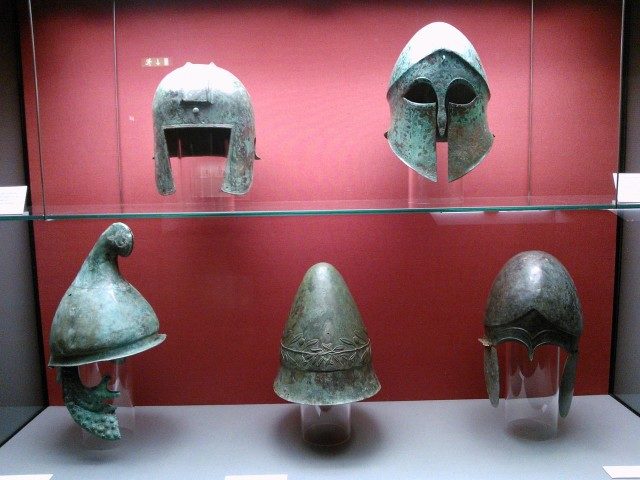
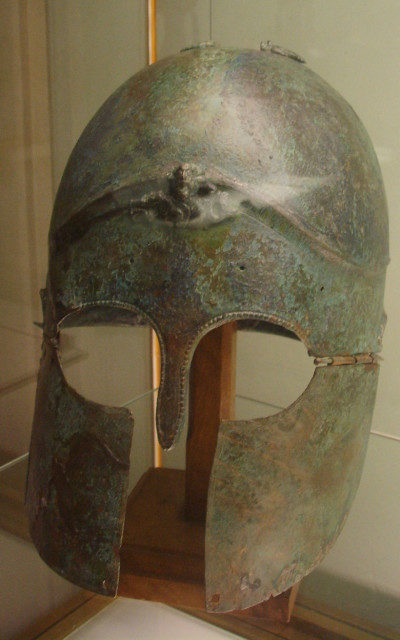
The Spartan helmet, probably the most well-known, was in use around 400 B.C. and originated in Sparta in southeastern Peloponnese. Sparta was legendary for being the most dominant military force in ancient Greece.
The helmets used by the Spartan warriors strongly resembled the Corinthian helmet with its pointed cheek guards and extended nose guard, but the plume was made with the same material used for the helmet, usually bronze. The bronze plumes became larger and more stylized as time went on and some even sat atop bases that looked like a bar or a pin rising from the top of the dome. They were often elaborately carved with Greek insignias or creatures such as snakes or lions.
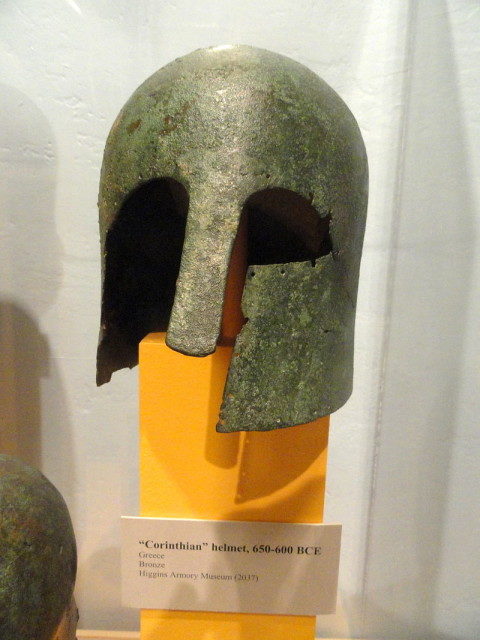
Many people enjoy Greek art, and some participate in battle re-enactments of ancient Greece.
An excellent resource for re-enactment gear and Greek art can be found at http://www.hellenic-art.com/, a dealer in authentic reproductions of Greek statuary, clothing, armour, pottery and jewellery and a great resource for styles of ancient Greek ephemera.
